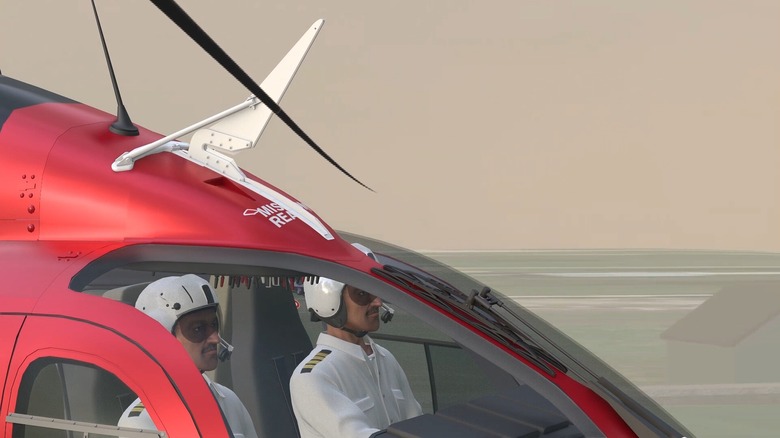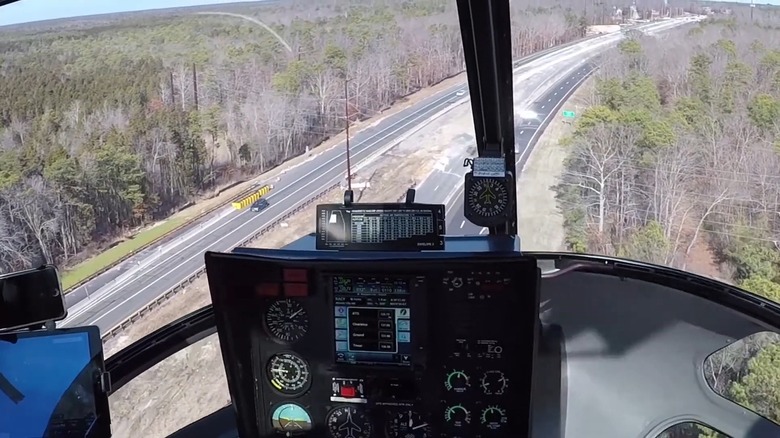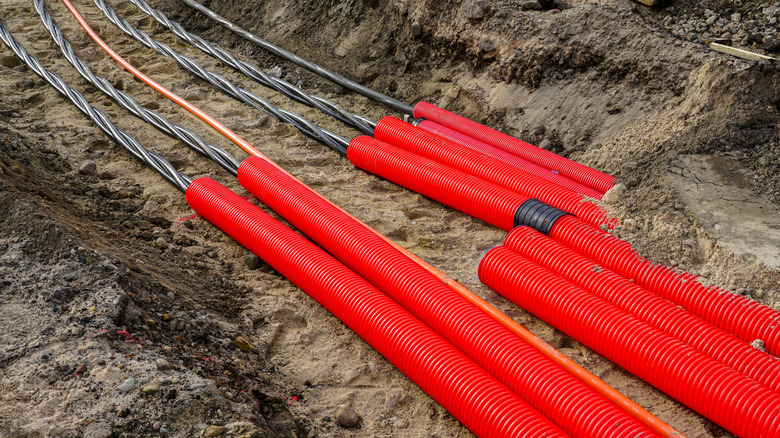Power Lines Can Cause Helicopter Crashes, But This Tool Helps Prevent Them
Helicopters are uniquely designed to offer benefits in the areas of emergency medicine, search and rescue, and firefighting, to name a few. While versatile, because helicopters do frequently fly and hover at lower altitudes, they become susceptible to striking power lines. Even with those orange balls on power lines, electric lines are the hazard that remains among the most dangerous faced by pilots. A report by Aerospace Systems Design Laboratory, sponsored by the FAA, found that wire strikes were one of the most frequent causes of helicopter accidents between 2016 and 2023.
Essentially, wires become too difficult for pilots to see until the aircraft is right on top of them. Fortunately, a few measures have been developed to help improve aircraft safety when flying in areas that include energy infrastructure hazards.
This includes wire cutter tools, which are mounted onto the aircraft and can cut the lines before the helicopter becomes tangled or damaged by them. These cutter tools include what looks like a large fin, which is used to guide a power line into the blades to be severed, potentially saving lives. One example is a kit from Dart Aerospace, and includes a cutter below and above the cockpit, along with a wiper deflector.
Unfortunately, wire cutters aren't always effective, so wire strike prevention is key
As a helicopter pilot, you obviously never want to be in a situation where you're relying on a wire cutting system. This is because it's essentially a last-ditch solution in a scenario where you've already run into the wires. Just how effective a wire cutting system is depends on factors such as the orientation of the aircraft when the impact occurs, how thick the wire is, and how fast the helicopter was flying when the collision happened. Ideally, for the best performance outcome of a wire cutting system, the aircraft would contact the lines at less than 90 degrees and be traveling at speeds greater than 35 miles per hour.
There are other preventative measures in place to help pilots avoid getting too close to power lines such as wire detection systems. This sophisticated safety technology can leverage the power of lasers or infrared cameras to notify the pilot of nearby wire proximity. Hopefully, the alert would provide the pilot time for evasive action.
However, it's arguably most important to have a solid foundation of training, preparing pilots for what to look for, and how to operate in an environment with such hazards. For example, Chief Pilot Heather Howley, owner of the Independent Helicopters flight school, explained in a YouTube video that their students "practice flying over the poles, not over the wires."
Why aren't all power lines buried?
With the risks to aircraft like helicopters and agricultural planes colliding with them, and issues stemming from downed tree limbs, burying power lines would seem like a logical solution. You also wouldn't need to worry if your car hits a power line and stalls. However, going subterranean isn't the fix-all answer it might seem to be.
For one thing, taking above-ground energy infrastructure and putting it underground is a massively expensive operation, where the bill would presumably be passed onto the customer. Bringing wiring underground would require large equipment, road or lane closures, and a general disruption of the area during the process as well.
Not only do trees and other plants need to be removed from the entire length of the underground run, they must be managed to help prevent roots from disrupting the buried components. In fact, some argue that burying lines is more negatively impactful to the environment than suspended wires. Lines that are buried must also include additional insulation, may succumb to corrosion quicker, and will be impossible to bury in certain types of soil like bedrock.


